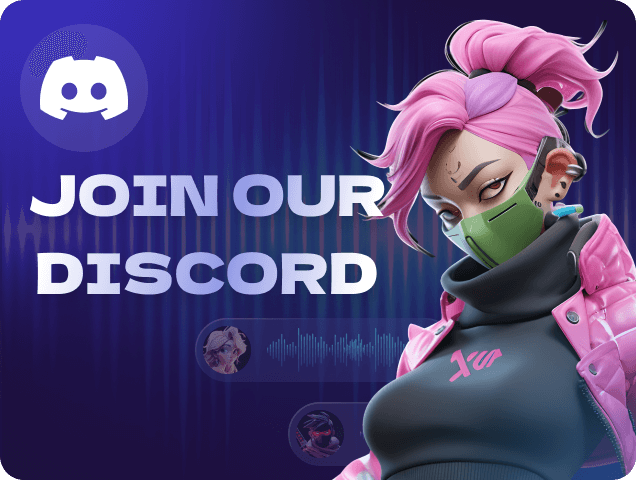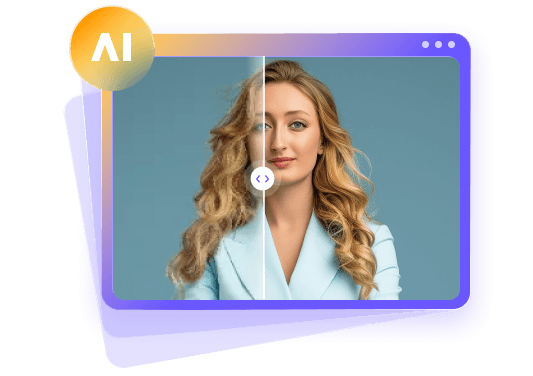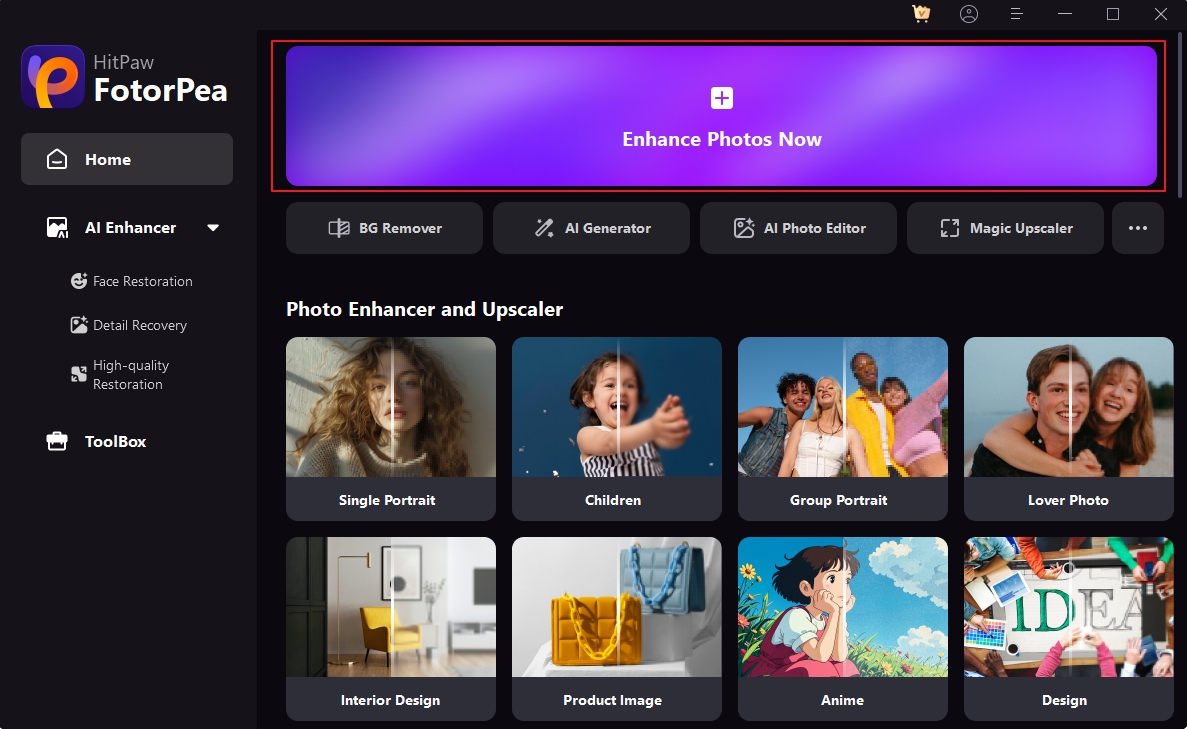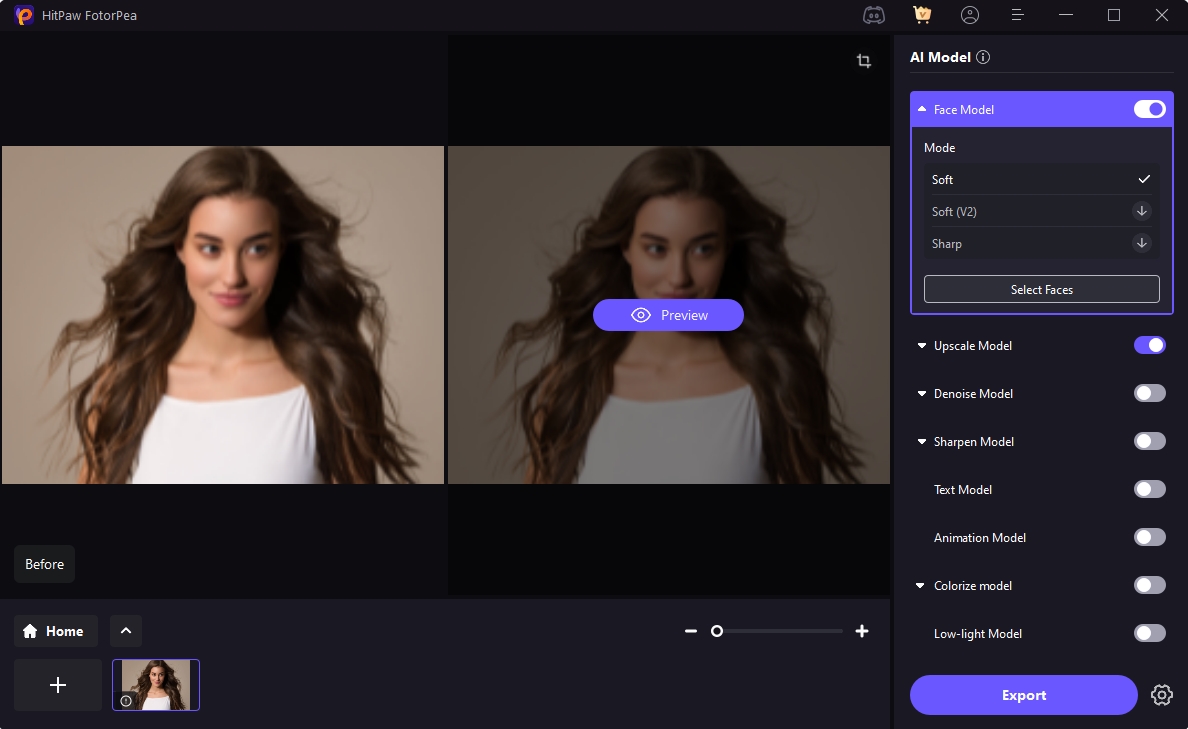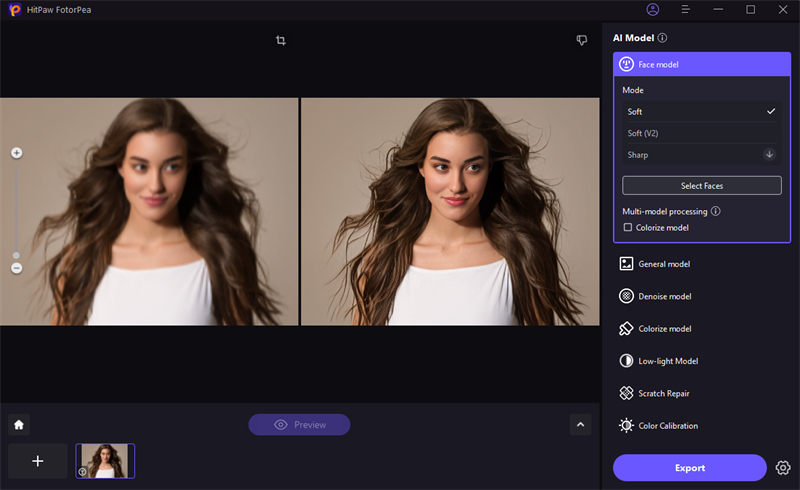A Two-Step Guide to Converting Images to 3D Model
Given the increasing popularity of transforming images into 3D data, the framework is applicable to a diversity of industries, including gaming and animation, architecture and product design, as well as any other that finds the creation of 3D models an interesting challenge. Whether it is the hobbyists or the major corporations, this image to 3D model conversion technology has never been more accessible and democratized.
Yet, there is a critical problem which most users face: when images have low quality, causing the optimization of the 3D outcomes to be mediocre. The source image quality is the direct determinant of the precision, detail, and success of your 3D model conversion. That is where a two-step strategy can come in useful: first edit your images with HitPaw FotorPea and then convert them through 3D model tools that are powered by AI.
Part 1: What is Image to 3D Model and Why Image Quality Matters?

Understanding Image to 3D Model Conversion
Conversion of images into 3D models is a transformative technology based on the use of artificial intelligence to study a two-dimensional photograph and create a three-dimensional digital image. It has advanced algorithms to read depth, shadows, textures, and geometry of an image and reconstructions of these elements to make up a navigable 3D object.
AI 3D model generators are software programs that operate by understanding multiple visual data in your image:
- Depth perception: Perceiving a foreground and background
- Shadow analysis: Regions of understanding of interaction between light and a surface
- Texture mapping: Representation of surfaces and surface material
- Edge detection: Detection of objects' shapes and boundaries
The Critical Role of Image Quality
First, it is critical that you have good source material to start with; the quality of any 2D to 3D model conversion mostly depends on this. The clarity and detailed imagery are needed to train the AI to be able to interpret the spatial relations and surface features. Using high-quality images, the AI has the ability to separate items out, learn depth relationships, and synthesize more realistic 3D modeling.
Common image issues that cause poor 3D conversion are:
- Low resolution: Images which contain low resolution pixels lack any detailed information that would be used in the construction of a 3D image
- Blur and motion artifacts: Indefinite edges relay against the depth perception algorithms
- Bad lighting: The light is poor and there is difficulty in reading the texture of the surfaces and depth perception
- Noise and compression artifacts: The pattern recognition is disrupted by digital noise
- Inappropriate exposure: Overexposed and under-exposed images lack important information in the form of detail
When low-quality images are used as input to 3D conversion tools, the resulting models lack precision geometries, lack of details, distorted proportions, and unrealistic texture-all of which render the end result useless that directly consequent to the conversion process.
Part 2: How to Enhance Images with HitPaw FotorPea
HitPaw FotorPea is an all-inclusive AI-based image enhancer aimed at helping produce simple photos into quality masterpieces. This advanced tool takes on the key challenge of image to 3D model conversion by making sure your source images are high enough to achieve the necessary quality standards in image to 3D model conversion.
Image enhancement prior to 3D modeling is extremely significant. This may seem like an oversimplification, but it is important to note that by focusing on picture quality, you will be giving the AI 3D generators clear and detailed images to work with to create correct and aesthetically-pleasing 3D models. This preprocessing process will go a long way towards helping you get professional-level results.
Optimal Features of HitPaw FotorPea
HitPaw FotorPea provides a complete package of enhancement tools especially to prepare an image to higher needs such as 3D modeling:
- AI Image Restoration: Sophisticated logic repairs degraded or corrupt images and fills in the gaps, rectifying the distortions
- Intelligent Noise Reduction: Eliminates digital noise but keeps significant image details and textures
- AI-Powered Images: The creation of high resolution and sharpened models of existing images
- Automatic Brightness Correction: Helps best adjust exposure to see hidden details in shadows and highlights
- Color Enhancement: Enhances the colors and the color-accuracy and still have a natural look in the pictures
- Resolution Upscaling: Raising a picture in quality without artifacts or blurring
Steps to Enhance Images with HitPaw FotorPea
Step 1.Go to the HitPaw FotorPea website and download & install the program to your computer.
Step 2.Open HitPaw FotorPea and import the picture that you would like to be converted to 3D model by clicking on Enhance Photo Now.

Step 3.Select Enhancement Model as FotorPea has quite a variety of AI models which are optimized with respect to different types of images (photos, artwork, etc.). Apply enhancements and allow the AI to process and improve your image automatically.

You can also fine-tune particular parameters such as the strength of noise reduction or the level of color enhancement.
Step 4.Preview results and compare to the original without and with the improvement to assure best quality.

Step 5.Save your enhanced image at its high resolution, which can be converted to 3D model.

Now you'll need AI tools to convert enhanced images to 3D models.
Part 3: 4 AI Tools to Convert Enhanced Images to 3D Models
After you have optimized your images with HitPaw FotorPea, the next thing to do is to choose the appropriate AI tool to convert to 3D. The following are the four most popular platforms that perform excellently in the conversion of 2D images to three-dimensional models:
1. Meshy AI

Meshy AI is a state-of-the-art solution to the image-to-3D conversion problem, which can produce high-resolution 3D models of objects using only one image and advanced neural networks. The platform is particularly strong at producing game-ready assets and architectural visualizations at an impressive rate of accuracy.
Pros:
- Short processing time (usually 2-3 minutes)
- Quality mesh generation and topology-clean mesh
- Various export types such as OBJ, STL, and FBX
- Easy to use interface that can be used by novices
Cons:
- Restricted customization at the time of conversion
- Commercial use requires subscription
- Sometimes problems with complicated geometrical figures
2. Krea AI

Krea AI is a complete creative platform with strong image-to-3D tools and other AI-enabled design tools. The platform is dedicated to artistic and creative use, so it is suitable for designers and digital artists.
Pros:
- Perfect with artistic and stylized 3D models
- Combination with other creative AI tools
- Good community and tutorials
- Frequent feature updates and enhancements
Cons:
- Advanced features learning curve
- Processing may take a long time
- Scant technical documentation to developers
3. HuggingFace

HuggingFace offers open-source 3D models to images via their comprehensive machine learning platform. This alternative is attractive to developers and researchers who desire to test various algorithms and to tailor their 3D generation process.
Pros:
- Free and open source
- Various models to select
- Vibrant developer community
- Extremely configurable to technical users
Cons:
- Technical knowledge is needed to implement
- No intuitive graphical interface
- The time it takes to process is dependent on your hardware
- Poor customer services
4. Rodin AI (Hyper3D)

The Hyper3D platform developed by Rodin AI is focused on generating photorealistic 3D models based on images, and is especially strong at working with human bodies and organic shapes. The tool is quality-focused and works slowly, delivering very detailed results.
Pros:
- Excellent organic shapes and figures
- Photorealistic texture mapping
- High-end lighting and material simulation
- Output quality that is professional grade
Cons:
- Increased processing time (5-10 mins)
- Increased price over substitutes
- Intensive in resources, needs stable internet connection
Steps: Meshy AI Detailed Conversion Process to convert Enhanced Images to 3D Model
Step 1: Select Image to 3D Tool

Put it in a text-to-3D or image-to-3D AI-powered platform such as Meshy. Select Go to Workspace → Image to 3D to begin.
Step 2: Survey the Workspace

- Sidebar: Transcode your image and gain examples/tutorials.
- 3D Viewer: Check and modify the generated model.
- Assets: Create a folder and find your creations.
Step 3: Upload and Generate

Upload your picture, press Generate, and then your own 3D model can be ready in a few seconds.
Part 4: Recommended Workflow and Tips for Image to 3D Model Conversion
The Optimal Two-Step Workflow
The best solution and the only trusted procedure to convert an image to 3D is by using the following workflow:
Step 1: Image Enhancement using HitPaw FotorPea
- Import to HitPaw FotorPea the original image you have created
- Use AI enhancement to enhance resolution, noise reduction, and optimize lighting
- Export the processed image with highest quality possible
Step 2: AI Tools to perform 3D Conversion
- Choose the right AI 3D generator that suits your requirements
- Upload the improved picture and set the conversion options
- Create and export your 3D model
Best Results Pro Tips
To make your conversions of image to 3D model as successful as possible, take into account the following rules provided by experts:
- Use high resolution images: With enhancement, it is always better to start with the most high resolution you have in hand
- Proper lighting: Good lighting on the subjects so that the shadows are clear and aid the AI to know depth and shape
- Use pure, non-obstructed subjects: The subjects with less background clutter produce cleaner 3D models
- Try various AI generators: All tools are different, and they can have different strengths, so experiment to make sure you choose the one that suits you
- Take into consideration various angles: Have photos taken at a little different angle at your disposal as a reference
Recommendations on Tool Selection
- Beginners: Meshy AI provides optimal ease-of-use and quality results combination
- To Artists and Designers: Krea AI gives them creative freedom and artistic control
- To Developers and Researchers: HuggingFace is customizable and has open source accessibility
- In Commercial Applications: Rodin AI will provide the most superior output in commercial applications
FAQs about Image to 3D Model
There are some free or limited image to 3D model converters, yes. HuggingFace offers entirely free open-source resources, whereas Meshy AI, Krea AI, and Rodin AI provide free rates with limitations in use. Nevertheless, the best results may be achieved by using free enhancement tools such as HitPaw FotorPea trial version together with free 3D generators to deliver professional results at no charge.
No, HitPaw FotorPea is focused on the enhancement of images using AI, not 3D model creation. Its use in the work flow is to clean up and optimize your images to achieve successful 3D conversion by enhancing quality, resolution and clarity. In cases where specialized 3D generation software is used, it is essential in the final stages of producing quality 3D object results.
Ideal photos used in 3D modeling are characterized by a number of factors, including high resolution (minimum 1024x1024 pixels), sharp focus (minimum blur), proper lighting (enough to show more details on the surface), single objects (minimum clutter), proper lines and surfaces. Geometric objects, objects with distinct boundaries, and different lighting will generally give the best 3D outputs.
Conclusion
There has perhaps never been a better time to go on a journey towards 2D images to breathtaking 3D models; however, the key to this success lies highly in the quality of your source material. The first key impediment to professional 3D modeling output is poor image quality, and image enhancement should therefore be the first step in any conversion process.
Being armed with the double strategy suggested in this tutorial-photograph editors improve their pictures in HitPaw FotorPea, and after, convert them to 3D with special AI tools-you are bound to succeed. With this methodology, your 3D models will have that detail, precision and aesthetic quality that your projects require.
Leave a Comment
Create your review for HitPaw articles

